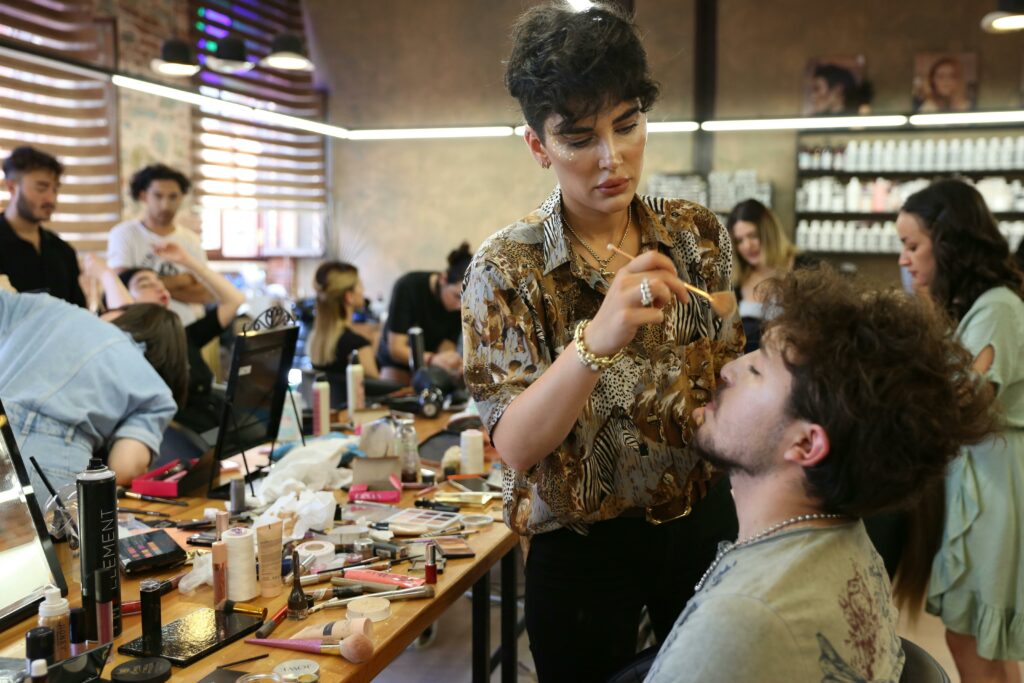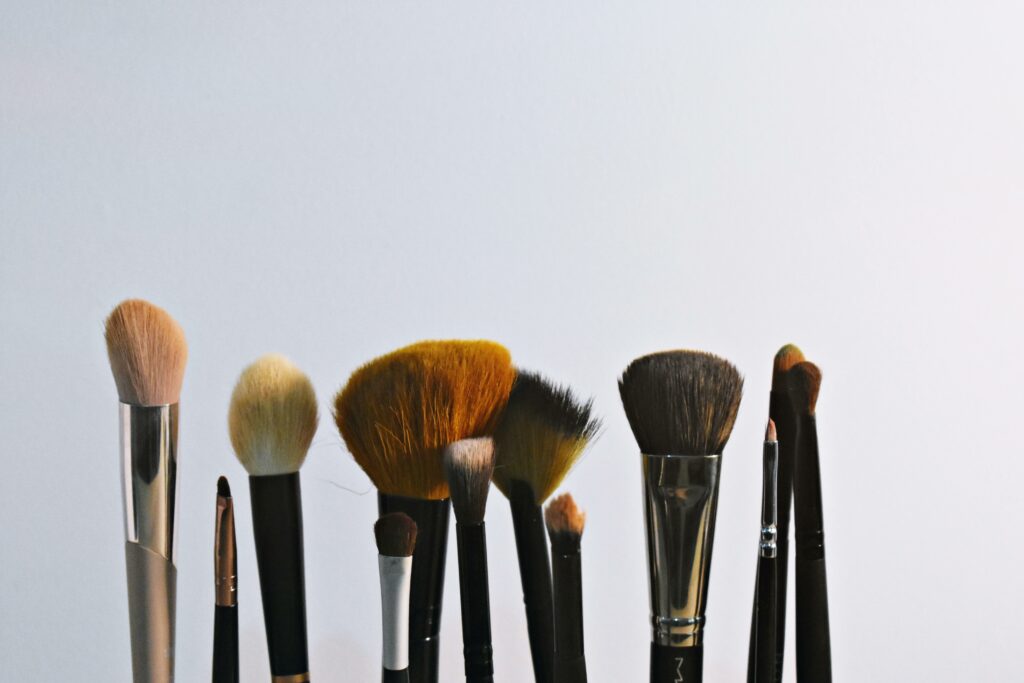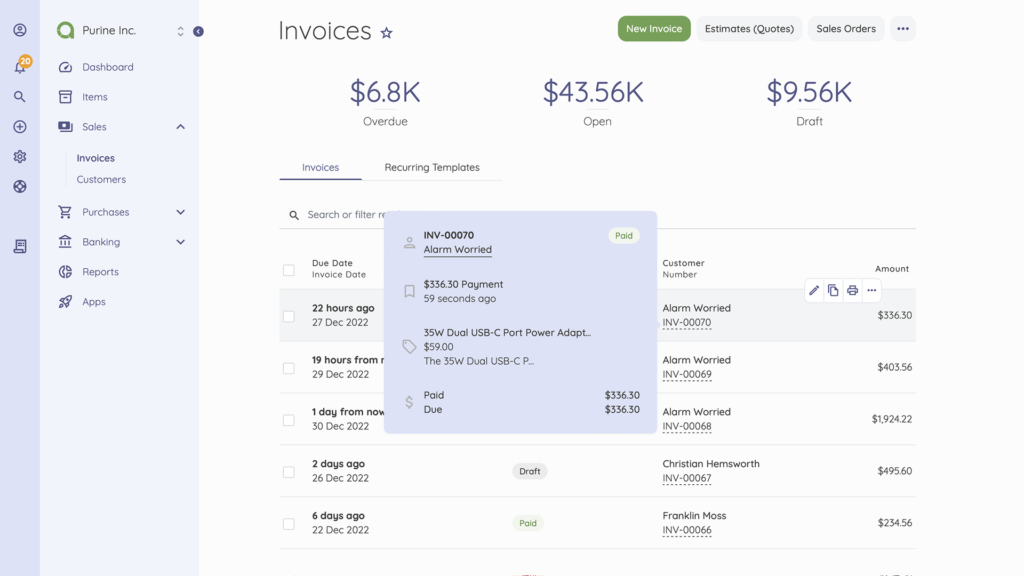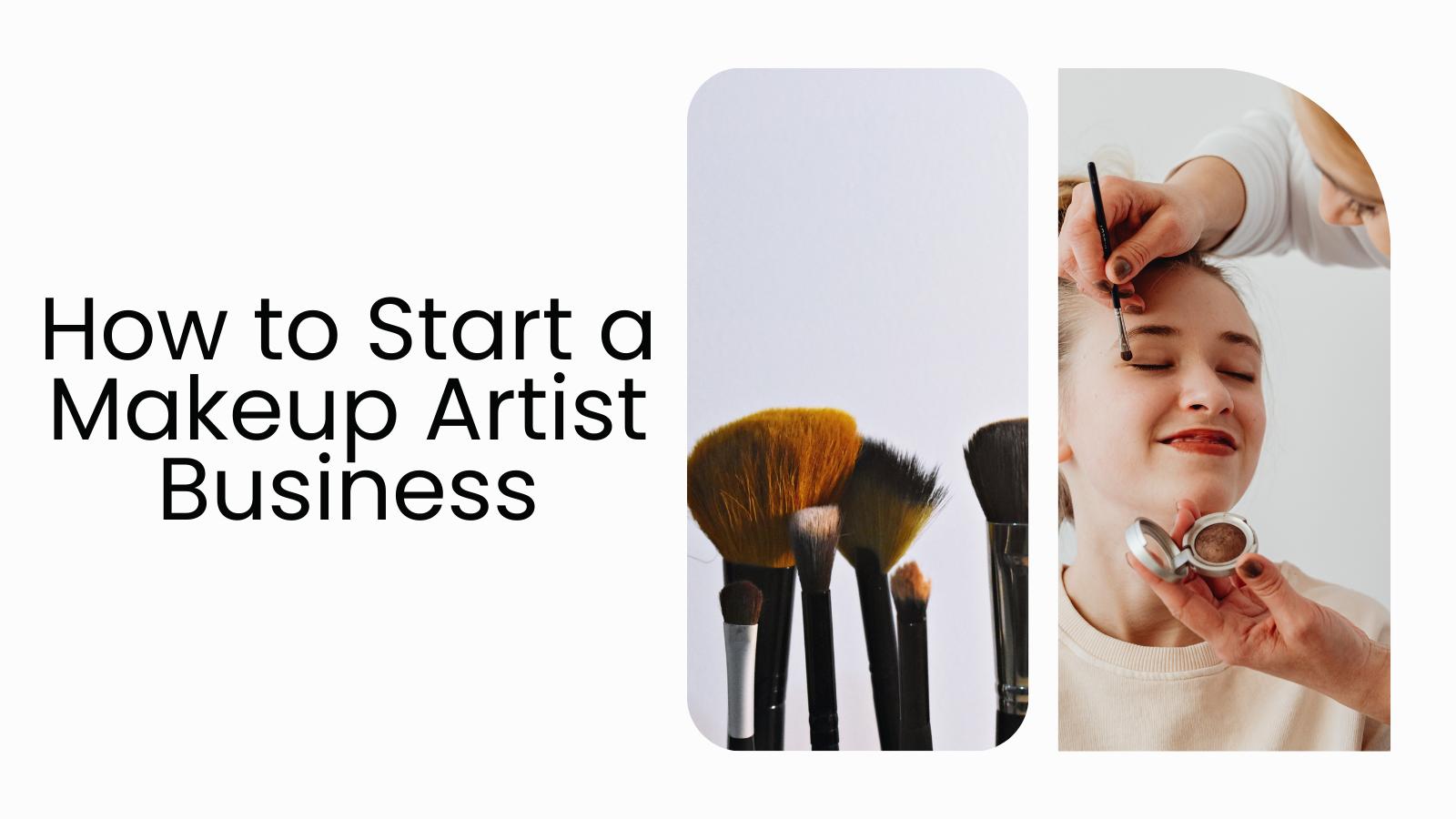How to Start a Makeup Artist Business: Journey from Passion to Success
Reading Time: 9 minutesBuilding a successful makeup artist business isn’t just about applying makeup; it’s about blending creativity, skill, and business savvy.
You’ve always loved makeup. As a child, you marveled at your mother’s lipstick collection, secretly dabbing a bit on your lips when no one was looking.
Fast forward to today, and you’re the go-to person for your friends whenever there’s a wedding, a party, or a photoshoot.
You love the transformation that a touch of blush, a bold eyeliner, or the perfect foundation can bring to someone’s confidence.
Now, you’re ready to turn this passion into a thriving business. But where do you start? Let’s walk through the journey of becoming a successful makeup artist.
Table of Content
- – Finding Your Unique Style
- – Perfecting Your Craft
- – Building Your Make-up Kit
- – Setting Up Your Business
- – Marketing Your Makeup Artist Business
- – Managing Finances Like a Pro
- – Scaling Your Business: The Next Level
- – Final Thoughts
- – FAQ
Finding Your Unique Style: The First Step to Standing Out
Every great makeup artist has a signature style. Maybe you’re drawn to soft, natural bridal looks or love the drama of bold, editorial makeup.
Do you dream of working on film sets and crafting realistic special effects, or would you rather help influencers look flawless for their social media content? The beauty industry is vast, and discovering your niche is key to success.
Take a moment to reflect. What excites you the most about make-up artistry? Where do you see yourself in five years? Understanding your passion will guide your decisions as you move forward.
Some Statistics to Help You Understand the Makeup Industry
According to the U.S. Bureau of Labor Statistics, as of May 2023, the Personal Care Services sector employs the highest number of theatrical and performance makeup artists, with approximately 1,910 professionals making up 0.26% of industry employment.
The Motion Picture and Video Industries also present substantial opportunities. Around 1,330 makeup artists work in this sector, which accounts for about 0.33% of the industry’s workforce.
Additionally, the Amusement Parks and Arcades industry employs about 300 makeup artists, representing 0.13% of its workforce. The bridal makeup industry is experiencing notable growth, with demand for bridal makeup artists projected to increase by 12.5% between 2016 and 2026. This indicates a robust market for small business owners specializing in this area.
While the personal care services sector employs the most makeup artists, industries such as film, video, and the bridal sector are in significant demand and offer lucrative opportunities for small business owners.
Perfecting Your Craft: Learning and Certification
While natural talent is an excellent foundation, formal training can significantly enhance your skills and distinguish you in the competitive world of makeup artistry. Many of the industry’s most sought-after professionals continually seek knowledge, enrolling in masterclasses and staying up-to-date with the latest trends and techniques.
Here are several effective ways to elevate your expertise in make-up artistry:
Enroll in a Cosmetology Program
Look for accredited cosmetology schools that provide structured training in makeup application, skincare, and overall beauty techniques.
These programs typically cost between $5,000 and $20,000, depending on factors such as geographical location, the institution’s reputation, and the course duration.
Hands-on experience in a classroom setting can be invaluable as you hone your craft.
Participate in Online Courses
Platforms like MasterClass and Udemy present a wealth of online classes that allow you to learn at your own pace.
With courses starting at $100, you can gain insights from industry leaders and explore various makeup styles, techniques, and trends without extensive travel or a time commitment.
Check out this Udemy link for top-rated makeup artistry courses.
Attend Industry Workshops
Seek out workshops conducted by renowned makeup artists. Depending on the location and organizer, fees range from $100 to $500.

These workshops offer a unique opportunity to work in a collaborative environment, learn directly from experts, and enhance your technical skill set through practical, hands-on experience.
Obtain Professional Certification
Brands such as MAC, Sephora, and others offer certification programs that can significantly enhance your resume and boost your credibility as a make-up artist.
Completing these programs demonstrates your commitment to the profession and often provides you with unique insights and knowledge about specific product lines.
Check out the available certifications you may need here.
Understand Local Licensing Requirements
It’s important to note that many states mandate licensing for professional make-up artists, especially those providing skincare services. Here are some common types of licenses and certifications that might be required:
- – Cosmetology License: Many states require makeup artists to obtain a cosmetology license, which involves completing a state-approved cosmetology program and passing a licensing exam.
- – Esthetician License: If a makeup artist plans to work in a spa or salon, they may need an esthetician license, which focuses on skincare and makeup application.
- – Spa and Salon License: Working in a licensed spa or salon may require additional permits or licenses specific to that establishment.
- – Health and Safety Certifications: Depending on the location, makeup artists may need to complete health and safety training to ensure proper hygiene and sanitation practices.
It’s important to research the specific requirements in your area and the type of makeup artistry work you plan to pursue.
Did you know that L'Oréal is the leading beauty products company with over $40 billion in sales globally?
Building Your Makeup Kit: The Essentials for Success
Your make-up kit is your creative arsenal, and investing in top-notch products is crucial for delivering exceptional results. Picture yourself arriving at a client’s wedding with inferior products that fade or smudge before the ceremony concludes—such a scenario could seriously damage your reputation!
Here’s a comprehensive breakdown of what you’ll need to build a professional-grade kit:
Foundation & Concealers ($200–$500)
Choose a range of foundations that cater to different skin tones and types—matte for oily skin, dewy for dry, and long-wear formulas for events. Remember concealers.
A high-quality concealer can flawlessly cover blemishes, dark circles, and imperfections, enhancing your client’s natural beauty.
Eyeshadow Palettes ($100–$300)
Invest in versatile palettes that feature a wide array of shades, from vibrant colors for creative looks to neutral tones for more understated elegance.
Look for palettes that include matte and shimmer finishes to provide versatility for various occasions.
Brushes & Sponges ($50–$200)

A well-rounded set of brushes is essential for flawless application. To accommodate different makeup techniques, consider including a variety of brush types—foundation brushes, blending brushes, and precise liner brushes.
Quality sponges are equally important for seamless blending and a smooth finish.
Lipsticks & Glosses ($100–$250)
Curate a collection of lip products that range from bold statements to subtle nudes. Look for formulas that offer long-lasting wear without compromising comfort.
Glosses should have good pigmentation and high shine to enhance any lip look.
Setting Sprays & Powders ($50–$150)
A makeup artist’s toolkit wouldn’t be complete without setting sprays and powders that lock in looks and ensure longevity.
Invest in a few options, including translucent powders for a lightweight finish and setting sprays that offer a boost of hydration or matte control, depending on your clients’ needs.
Sanitation & Hygiene Supplies ($50–$100)
Maintaining high standards of hygiene is paramount in the beauty industry. Stock up on sanitation supplies like alcohol wipes, brush cleansers, and hand sanitizers to ensure a spotless environment and reassure your clients of your professionalism.
Anticipate investing anywhere from $500 to $2,000 in a solid kit.
Setting Up Your Business
Every successful business starts with a solid plan. Your business plan will not only help you stay on track but also assist in securing funding if needed. Key components include:
- – Your Business Vision: Define what you want to achieve.
- – Market Research: Identify your target audience and competition.
- – Pricing Strategy: The industry standard ranges from $50–$250 per session, with bridal packages reaching $1,000.
- – Marketing Plan: Outline how you’ll attract clients.
- – Financial Projections: Estimate your expenses and potential revenue.
Registering and Legalizing Your Business
You’ll need to register your business once ready to offer services professionally. Here’s how:
- Register Your Business Name: LLC registration costs range from $50–$500.
- Obtain an EIN: This Employer Identification Number is needed for tax purposes.
- Get Business Insurance: Protect yourself from liabilities ($300–$600 annually).
- Check for Required Permits: Regulations vary by state.
Building Your Portfolio
Your portfolio is your most excellent marketing tool. Clients want to see your work before booking you, so focus on creating stunning before-and-after shots. Here’s how to build a strong portfolio:
- – Offer free or discounted services to friends and models.
- – Work with photographers to create high-quality images.
- – Develop a social media presence (Instagram, TikTok, Pinterest).
Marketing Your Makeup Artist Business: Getting Clients and Growing Your Brand
A steady flow of clients comes from smart marketing. Here are some ways to attract your dream clients:
Leverage Social Media Advertising
Platforms like Instagram and TikTok are ideal for visually showcasing your makeup artistry. Get creative with content that includes before-and-after transformations, tutorial videos, and behind-the-scenes glimpses of your application process.
Engage your audience with stories, reels, and posts that highlight seasonal looks or themed events.
Use targeted ads to reach specific demographics interested in beauty and makeup services.
Did You Know:
70% of beauty purchases are influenced by social media and influencer marketing
Collaborate with Local Businesses
Networking with other local services can be highly beneficial. Consider partnering with hair salons, bridal shops, or event planners to create packages that meet the needs of their clients.
This collaboration can also take the form of cross-promotions, where you can showcase your make-up services at their events or through their social media platforms, leveraging their established clientele to gain new customers.
Optimize Your Website for Search Engine Optimization (SEO)
Optimizing your website for SEO will make it easy for potential clients to discover you. This includes integrating relevant keywords related to makeup services, such as “bridal makeup,” “event makeup,” or “makeup tutorials.”
Providing valuable content like blog posts on makeup tips, product reviews, and makeup trends can also enhance your visibility in search engines, making it easier for clients to find you when searching for makeup artists in your area.
Implement Referral Discounts
Never underestimate the power of word-of-mouth marketing in the beauty industry. Offer appealing referral discounts to encourage your satisfied clients to refer their friends and family.
You might consider giving both the referrer and the new client a percentage off their next service.
This strategy not only rewards loyalty but also motivates your existing clients to become enthusiastic ambassadors for your brand.
Managing Finances Like a Pro
As an artist, you wear multiple hats—including that of a business owner. It’s essential to have a firm grasp on your finances, including tracking your income, managing expenses, and handling invoices effectively.

This is where Akaunting comes into play—an easy-to-use and free online accounting software specifically designed to cater to the needs of creatives like you. With Akaunting, you can:
- – Create and Send Professional Invoices: Elevate your professionalism by using customizable invoice templates. You can also automate invoices for recurring services. Check out “How Do I Create Recurring Invoices?“
- – Seamlessly Track Your Income and Expenses: Stay on top of your financial movements with an intuitive dashboard that allows you to monitor your earnings and spending. This feature helps you recognize patterns in your financial habits, enabling informed decisions.
- – Manage Your Business Finances in Real Time: You don’t need to wait until the end of the month to get an overview of your finances. Akaunting provides real-time insights into your financial health, allowing you to react quickly to any changes or opportunities.
By utilizing Akaunting, you can dedicate more time and energy to your creative pursuits, knowing your financial organization is efficiently handled and controlled.
Scaling Your Business: The Next Level
After establishing a solid foundation for your business, the next step is to focus on expansion. Here are some strategic avenues to consider:
Teaching MakeUp Classes
Leverage your expertise in makeup artistry by offering hands-on workshops or online courses. Create a curriculum that covers essential techniques, product recommendations, and trends, allowing you to share valuable insights with aspiring makeup artists or beauty enthusiasts.
This generates additional income and helps you build your brand within the beauty community.
Hiring Additional Artists
As your business grows, consider hiring a team of skilled makeup artists. Carefully select individuals who align with your brand’s vision and values. This can help you expand your capacity to take on larger events, such as weddings or corporate gatherings.
This collaborative approach will enable you to serve more clients while maintaining high-quality service.
Launching a Product Line
Capitalize on your unique artistry by creating a line of beauty products tailored to your clientele’s needs. Whether it’s a signature lipstick range, exclusive brushes, or skincare essentials, focus on developing high-quality items that reflect your expertise and style.
Final Thoughts
Starting a makeup artist business is more than applying foundation and mascara—it’s about creating a brand, building relationships, and managing a business.
With passion, dedication, and the right strategies, you can transform your love for makeup into a profitable career.
And with Akaunting keeping your finances in check, you’ll be set up for long-term success.
Frequently Asked Questions
How much does a make-up artist make?
The salary of a makeup artist can vary significantly based on factors such as location, experience, and the specific type of work they perform. On average, makeup artists in the United States earn approximately $55,519 per year.
However, salaries can range from $45,237 to $71,235 annually. Hourly rates generally fall between $25 and $50, but experienced artists in high-demand areas can charge considerably more.
Do you need a license to be a makeup artist?
Licensing requirements for makeup artists vary by location. In the United States, many states require a cosmetology or esthetician license, while in the UK, formal training and certifications are common but not mandatory.
Makeup artists can also enhance their credentials with professional certifications from makeup academies.


